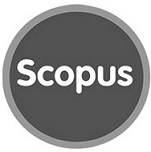Ovule and seed ontogeny of <i>Sterculia striata</i> (Sterculiaceae)
DOI:
https://doi.org/10.30972/bon.151-293Abstract
Sterculia striata presents two types of flowers on the same foot, perfect flowers that are functionally pistilate, and staminate flowers. For this reason this species was described as andromonoecious. The ovary is apocarpous, constituted by 4-5 carpels, while the style and the stigma are coherent. Considering their ontogeny and organization, the ovules are constituted by two units: the nucellar one, formed by nucella and inner integument; and the funicular one, that includes chalaza and external integument. The position of exostome near the hilum is in accordance with an anatropous ovule. However, due to the combination of all these characteristics the ovule of S. striata is described as hemianatropous. The ovule displays a very prominent exostome that persists in the seed as a caruncle. It also presents an obturator of placentarian origin. The fertilization is acrogamous. Three phases of the ovule and seed ontogeny were detected: initial, where nucella is curved until 90º; prefertilization, where the external integument continues its growth until the exostome is closed at 180º; and posfecundation, where the nucelar unit retakes the erect position and the embryo is inverted with respect to the hilum. The seed coat is multiplicative, being the layer of macrosclereids of the exotegmen the mechanical layer. The fruit is a follicle, in which each carpel presents abundant lysigenous cavities filled with mucilaginous substances.Downloads
Download data is not yet available.
Downloads
Published
2006-01-01
How to Cite
González, A. M., & Cristobal, C. L. (2006). Ovule and seed ontogeny of <i>Sterculia striata</i> (Sterculiaceae). Bonplandia, 15(1-2), 63–77. https://doi.org/10.30972/bon.151-293
Issue
Section
Original papers
License
Declaration of Adhesion to Open Access
- All contents of Bonplandia journal are available online, open to all and for free, before they are printed.
Copyright Notice
- Bonplandia magazine allows authors to retain their copyright without restrictions.
- The journal is under a Creative Commons Attribution 4.0 International license.















.jpg)


